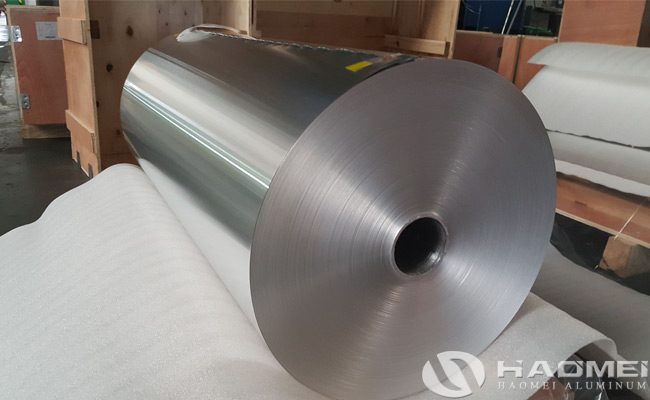What Are the Properties of Aluminum Foil
What are the properties of aluminum foil? We should know the performance of aluminium foil first. The properties of aluminum foil determines the uses of aluminum foil, and the performance shows the the properties of aluminum foil.
The properties and performance of aluminum foil are:
1, Thickness
Thickness is one of the most basic and very important physical properties of aluminum foil. The thickness of aluminum foil has a certain relationship with its barrier properties. As the thickness of aluminum foil increases, its transmittance to oxygen, water vapor, light, etc. gradually decreases, and accordingly, its barrier properties are also higher. The thickness of aluminum foil used in composite flexible packaging is usually between 7 and 9 microns. In practical applications, aluminum foil of suitable thickness should be selected according to different contents and different performance requirements, otherwise it will not meet the expectations barrier effect (too thin), or cost increase (too thick).
In addition, it should be pointed out that the thickness of the aluminum foil must be uniform. If the thickness of the aluminum foil is not uniform, it is easy to cause problems in production. First, the thickness of the aluminum foil is inconsistent, which makes it difficult to uniformly coat the adhesive during the aluminum foil compounding process, thereby affecting the compounding strength of the aluminum foil and the plastic film; secondly, the thickness of the aluminum foil is inconsistent, and the material roll is loose and tight, which will occur during the compounding process. The phenomenon that the material roll swings left and right can easily lead to foil breakage after the tension is applied to the winding and unwinding, which is very unfavorable for the smooth progress of the composite process.

2, Moisture permeability
Moisture permeability refers to the amount of water vapor transmission of aluminum foil under certain conditions, which reflects the moisture-proof performance of aluminum foil to a certain extent.
3, Number of pinholes
In the calendering process of aluminum foil, if the purity of aluminum is not high enough, and (or) the shadow of dust in the surrounding air during the calendering process, when the aluminum foil is calendered to a thickness of less than 10 microns, there are often pinholes. The number of holes and the size of the pinhole diameter depend on the amount of dust and the diameter of the dust particles. Due to the existence of pinholes, the barrier performance of aluminum foil will be seriously affected. For example, in the retort packaging bag with aluminum foil as the intermediate material, the existence of a large number of pinholes can easily penetrate oxygen, water vapor and light. It will have an adverse effect on the quality of the packaged food, and even cause the spoilage of the food. Therefore, it is required that the number of pinholes in the aluminum foil should be as small as possible, and the aperture should also be as small as possible. Generally speaking, the number of pinholes of 7 micron thick aluminum foil should be lower than 50 holes/m2, and the number of pinholes of 9 micron thick aluminum foil should be lower than 30 holes/m2. In order to reduce the number of pinholes of aluminum foil and improve its barrier properties, high-purity aluminum raw materials must be used in the processing and manufacturing process of aluminum foil, and its purity is required to be at least higher than 99.5%. At the same time, the environment in the calendering workshop should be kept clean and free of dust to prevent the impact of dust particles on the quality of aluminum foil.
评论
发表评论